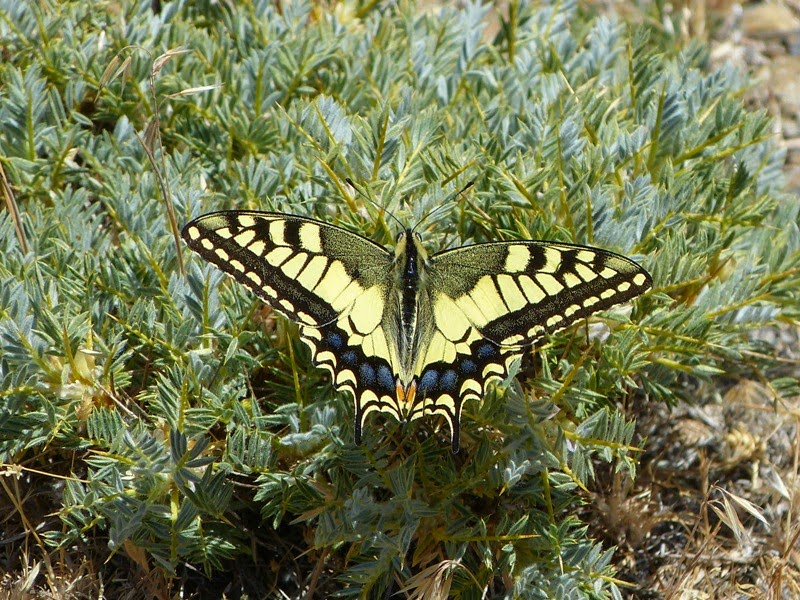This time it was just as good!
One of the first flower beds I came across had several Holly Blues, Celastrina argiolus, enjoying the flowers.
There were Small Whites. Pieris rapae, everywhere and they were certainly the most numerous butterflies in the gardens.
I returned to an area where two years ago I had seen a lot of Southern Brown Argus, Geranium Bronze, Common Blues and Small Coppers feeding on the flowers. Unfortunately this year the flowers were not doing as well and there were a lot fewer butterflies at this spot. I did see this nice Common Blue, Polyommatus celina, though.
While I was watching it, out of the corner of my eye, I spotted a large butterfly drifting past. Eventually I tracked it down in the high branches of a pine tree. It turned out to be a Two-tailed Pasha, Charaxes jasius. According to the books this flies in May/June and mid August to October, so I was surprised to see it the second week in July.
Nearer the entrance I spotted another enjoying something sticky on the lid of a bin.
Nearer the entrance I spotted another enjoying something sticky on the lid of a bin.
In another part of the gardens, I noticed some more in a tree. As I watched, it was apparent that there were seven or eight of them, some quite fresh-looking and others very ragged. I don't know what kind of tree this is, but it was obviously very attractive to the Pashas and other insects.
They would keep chasing each other from the choice fruit and fly across the path to the trees on the other side of the path. I spent quite a bit of time tracking them trying to get a picture, but they would always land high in the trees. At one point I completely lost sight of one of them as it flew past me. I couldn't figure out where it had gone, but then noticed something out of the corner of my eye. I had a Two Tailed Pasha sitting, parrot-fashion, on my shoulder! Unfortunately my camera strap was too short for me to get a selfie with it!
Close to where the Two Tailed Pashas were flying was a patch of Milkweed and right on cue a Monarch, Danaus plexippus, landed on one of the plants. They have their own little breeding colony of Monarchs at the botanical gardens and I saw quite a few during my visit.
Also enjoying the Milkweed was this Wall Brown, Lasiommata megera.
There were a few Speckled Woods, Pararge aegeria aegeria, enjoying the dappled light.
This rather worn-out Lang's Short-tailed Blue, Leptotes pirithous, was the only one I saw that day.
And I only saw one Small Copper, Lycaena phlaeas lusitanicus. This little butterfly occurs over most of Europe, but I only saw two on my whole holiday.
There were plenty of Southern Brown Argus, Aricia cramera, there, though.
Also flying in the botanical gardens were Large Whites, Pieris brassicae, Geranium Bronzes, Cacyreus marshalli, and Cleopatras, Gonepteryx cleopatra. And on our walk from the border to the bus station we saw a Brimstone, Gonepteryx rhamni, and a Clouded Yellow, Colias crocea.
Our trip to Gibraltar added two new species to my holiday list bringing it up to 48 species, 20 of which were new species for me!


































